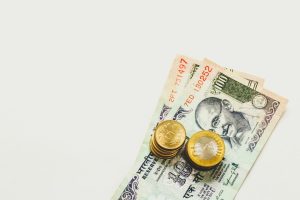Forex rigging is a term used to describe the practice of manipulating the foreign exchange market by traders, brokers, or financial institutions. Forex rigging involves collusion between different market participants to fix exchange rates, which can lead to unfair advantages for some while causing losses for others. The practice can also result in a decrease in transparency and efficiency in the foreign exchange market, leading to a lack of trust among investors and consumers.
Foreign exchange (forex) is the largest traded market in the world, with over $5 trillion traded daily. The forex market is a decentralized market where currencies are traded between different market participants such as banks, corporations, governments, and individuals. The exchange rates in the forex market are determined by the supply and demand of different currencies, and they are constantly fluctuating.
However, forex rigging occurs when traders or financial institutions manipulate the exchange rates to benefit themselves. This can be done in several ways, such as coordinating trades, sharing confidential information, or even engaging in fraudulent activities. One of the most common forms of forex rigging is the manipulation of benchmark rates, such as the London Interbank Offered Rate (LIBOR) and the WM/Reuters Fix.
The LIBOR is a benchmark rate that is used to set interest rates on loans, mortgages, and other financial products. The WM/Reuters Fix is used to set exchange rates for currency trades. Both of these benchmark rates are used globally and are considered to be critical to the functioning of the financial system.
Forex rigging can occur when traders collude to manipulate these benchmark rates by placing coordinated orders or sharing confidential information. For example, traders can agree to buy or sell a particular currency at a specific time to drive up or down the exchange rate. This can result in significant profits for the traders involved, but it can also cause losses for other market participants who are not aware of the collusion.
Forex rigging can also involve the use of computer algorithms that are designed to manipulate the forex market. These algorithms can be programmed to place trades at specific times to manipulate exchange rates or to take advantage of market inefficiencies. This can result in significant profits for the traders or financial institutions that use them, but it can also lead to losses for other market participants.
Forex rigging has been the subject of several high-profile investigations and lawsuits in recent years. In 2015, several major banks, including Barclays, Citigroup, JP Morgan, and UBS, were fined billions of dollars for their role in manipulating the forex market. In addition to the fines, some traders were sentenced to prison for their involvement in the rigging scheme.
The consequences of forex rigging can be severe, not just for the market participants involved but also for the broader economy. Forex rigging can lead to a decrease in trust and confidence in the financial system, which can result in reduced investment and economic growth. It can also lead to increased regulatory scrutiny and intervention, which can limit the profitability of financial institutions and restrict their ability to innovate.
In conclusion, forex rigging is a practice that involves the manipulation of the foreign exchange market by traders or financial institutions. It can occur in several ways, such as collusion, sharing of confidential information, or the use of computer algorithms. Forex rigging can lead to unfair advantages for some market participants while causing losses for others. It can also result in a lack of transparency and efficiency in the forex market, leading to a decrease in trust and confidence in the financial system.





